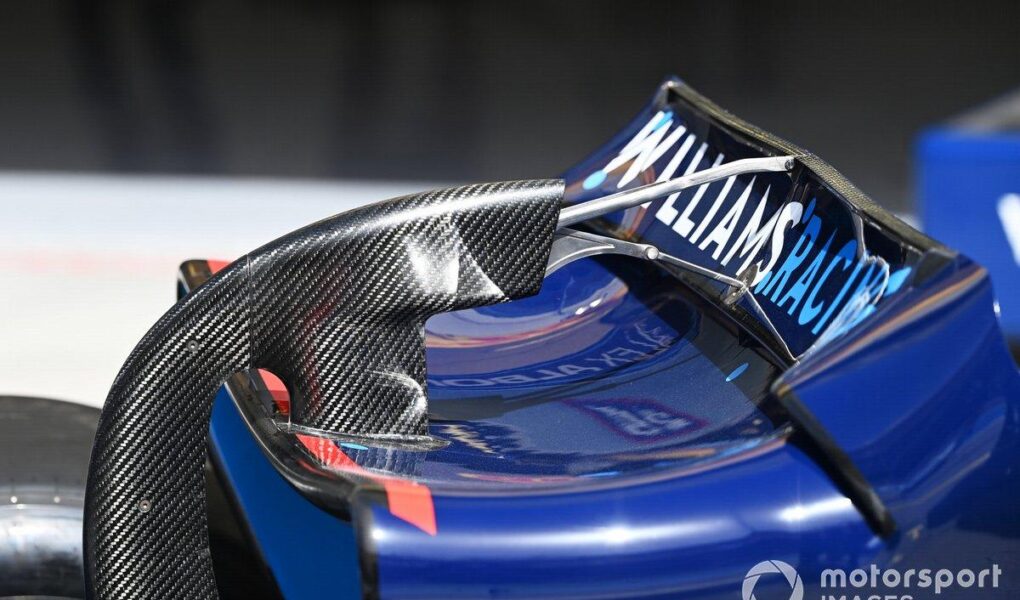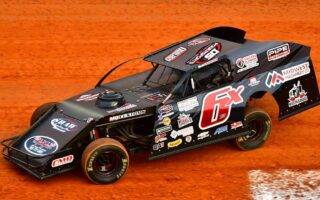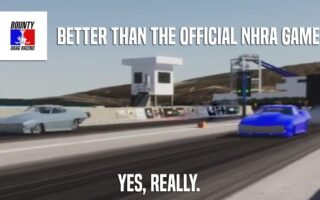Introduction: Navigating the Fast Lane of DRS Motorsport
In the exhilarating world of motorsport, where speed and precision reign supreme, one term has become synonymous with strategic overtaking and race dynamics: Drag Reduction System, or DRS. This innovative technology, introduced in Formula 1 racing and now embraced across various competitive motorsport disciplines, has transformed how drivers interact on the track. As engines roar and tires screech, DRS serves as a tactical tool that enhances the excitement of racing, allowing for daring maneuvers and rapid shifts in position. In this article, we delve into the intricacies of DRS motorsport—its origins, mechanics, and the impact it has on race strategies and outcomes—unraveling how this aerodynamic aid has redefined the art of overtaking in a sport where every millisecond counts. Join us as we explore the fusion of technology and competition in a realm where the thrill of the chase meets the precision of engineering.
Table of Contents
- Exploring the Evolution of DRS in Motorsport Dynamics
- Maximizing On-Track Performance with Strategic DRS Usage
- The Role of DRS in Enhancing Overtaking Opportunities
- Future Developments and Innovations in DRS Technology
- Q&A
- Final Thoughts
Exploring the Evolution of DRS in Motorsport Dynamics
Since its introduction, the Drag Reduction System (DRS) has transformed the landscape of motorsport by adding a tactical edge to races. Initially conceptualized to enhance overtaking opportunities in Formula 1, DRS has evolved through various iterations, each refining its applications to maximize competitiveness. The system works by adjusting the angle of the rear wing, reducing aerodynamic drag and allowing drivers to gain significant speed on straights. This not only creates exciting moments on the track but also has prompted teams to strategize carefully around the system’s activation zones during races.
The effectiveness of DRS has sparked debates among fans and experts alike, leading to changes in regulations to maintain a balance between speed and safety. Considerations such as the adventure of driver skill versus technological advantages have become pivotal discussions. Key factors influencing DRS application include:
- Activation Zones: Predetermined areas on the track where DRS can be activated, influencing race strategy.
- DRS Failure Protocols: Safety mechanisms to deactivate the system in adverse conditions.
- Inter-team Dynamics: How DRS affects the competitive relationship between drivers within and across teams.
As the rules governing DRS continue to evolve, its role within racing dynamics remains a focal point for innovation and improvement. With the introduction of real-time data analytics and enhanced telemetry, teams are now better equipped to harness the advantages DRS offers, making it a crucial aspect of modern motorsport strategy.
Maximizing On-Track Performance with Strategic DRS Usage
In the high-octane world of motorsport, the strategic use of Drag Reduction System (DRS) can be the difference between crossing the finish line in glory or succumbing to the competition. Drivers who master the application of this powerful tool understand that timing and placement are everything. Leveraging DRS effectively involves not only mechanical know-how but also a deep understanding of track dynamics and opponent behavior. When to engage, when to hold back, and how to anticipate the flow of the race can maximize on-track performance to unprecedented levels.
To optimize DRS usage, drivers often rely on a combination of real-time data analysis and racecraft. Here are some tactics to keep in mind:
- Analyze Track Zones: Identify the sections of the circuit where DRS will yield the most significant advantage.
- Consider Competitor Positioning: Monitor rival cars to prepare for overtaking opportunities.
- Data Feedback: Utilize telemetry data to evaluate the efficacy of DRS deployment during practice sessions.
Additionally, understanding the role of tire conditions and fuel loads can provide a competitive edge. Below is a simple table illustrating the impact of various factors on DRS effectiveness:
| Factor | Impact on DRS |
|---|---|
| Tire Condition | Optimal grip increases overtaking opportunities. |
| Fuel Load | Lighter cars benefit more from DRS. |
| Track Position | Leading cars face less resistance when DRS is engaged. |
The Role of DRS in Enhancing Overtaking Opportunities
The Drag Reduction System (DRS) has emerged as a pivotal technology in motorsport, particularly in Formula 1, where the thrill of overtaking is paramount to the spectacle of racing. By reducing aerodynamic drag, DRS allows cars to gain significant speed, thereby increasing the likelihood of successful overtakes on track. This system is activated under specific conditions, primarily in designated zones, which adds a layer of strategy to each race. Drivers must not only possess skill and timing but also remain acutely aware of the DRS regulations to maximize their chances of making a pass. The implementation of DRS has redefined how teams approach race tactics, encouraging them to optimize vehicle setups for both speed and strategic deployment of this tool during critical moments.
Moreover, the impact of DRS extends beyond just individual overtakes; it influences the overall dynamic of the race. The presence of DRS encourages a more competitive atmosphere, allowing drivers to close gaps and position themselves for overtaking maneuvers. As a result, fans witness more action-packed moments, contributing to the entertainment value of motorsport events. Additionally, the system has prompted teams to innovate further in car designs and aerodynamics, fostering a continuous cycle of development and improvement in the sport. The balance between DRS usage and traditional racing skills enhances the drama on track, making each race an unpredictable battle that keeps spectators on the edge of their seats.
| DRS Activation Conditions | Strategic Benefits |
|---|---|
| Within designated zones | Increased overtaking opportunities |
| Driver within 1 second of the car ahead | Encourages competitive racing |
| Activated by driver input | Allows tactical planning |
Future Developments and Innovations in DRS Technology
As DRS technology continues to evolve, several exciting innovations are on the horizon, poised to redefine its impact in motorsport. Key developments include:
- Adaptive DRS Systems: Future DRS systems may incorporate sensors and algorithms to adapt the deployment of downforce dynamically based on real-time race conditions, improving safety and competitiveness.
- Enhanced Communication Systems: Integrating advanced telemetry can enable drivers and teams to communicate DRS status more effectively, ensuring that the system is utilized at optimal moments during a race.
- Aerodynamic Improvements: Innovations in materials and design will likely lead to lighter, more efficient DRS components that enhance vehicle performance without compromising safety.
Moreover, the potential for synergy between DRS technology and other advancements in motorsport cannot be overstated. For instance, collaborations with:
| Technology | Potential Impact |
|---|---|
| Artificial Intelligence | Real-time data analysis for improved decision-making |
| Simulation Software | Enhanced predictive modeling for race strategies |
| Augmented Reality | Increased driver awareness and situational insights |
This convergence of technologies could lead to revolutionary changes in how DRS is perceived and utilized, ensuring that it remains at the forefront of motorsport innovation. The exploration of these developments signifies an exciting future, solidifying DRS’s crucial role in shaping competitive racing.
Q&A
Q&A: Exploring DRS Motorsport – The Dynamics Behind the Wheel
Q1: What is DRS Motorsport?
A1: DRS Motorsport refers to a specific team or organization within the realm of motorsport, known for its innovative approach to racing. The acronym ”DRS” may further imply an association with “Drag Reduction System,” a technology used in motorsport to enhance performance by reducing aerodynamic drag. This operational duality showcases both the name of the team and the technological advancements found in racing today.
Q2: How did DRS Motorsport establish its presence in the racing community?
A2: DRS Motorsport carved its niche through a combination of strategic partnerships, talented drivers, and a commitment to embracing cutting-edge technology. The team participated in various racing series, gradually building a reputation for quality and excellence, which allowed them to attract sponsors and a dedicated fan base.
Q3: What types of racing events does DRS Motorsport participate in?
A3: DRS Motorsport engages in a variety of racing disciplines, ranging from circuit racing to endurance and rally events. The versatility of their team means they can adapt to different racing formats, showcasing their drivers’ skills and the technical prowess of their vehicles across multiple tracks and terrains.
Q4: What role does technology play in DRS Motorsport’s operations?
A4: Technology is at the heart of DRS Motorsport’s strategy. They focus on research and development, utilizing advanced engineering methods to enhance vehicle performance. The incorporation of simulations, telemetry data analysis, and real-time adjustments during races ensures that DRS remains competitive, while also emphasizing safety and efficiency.
Q5: Who are the key figures behind DRS Motorsport?
A5: Like many successful teams, DRS Motorsport is backed by a diverse group of professionals, including experienced engineers, team managers, and dedicated drivers. Leadership qualities and a passion for the sport are crucial attributes in their influencers, who strive to drive overall success while fostering a collaborative environment.
Q6: What challenges does DRS Motorsport face in the competitive racing landscape?
A6: The racing world is fraught with challenges, from technical failures to the pressure of maintaining peak performance against rivals. DRS Motorsport also contends with budget constraints, the need for consistent innovation, and the ever-increasing expectations of fans and sponsors. Staying ahead in such a fast-paced environment requires agility, resilience, and strategic planning.
Q7: What can fans expect from DRS Motorsport in the coming seasons?
A7: Fans can anticipate exciting developments as DRS Motorsport plans to expand their competitive outreach, possibly venturing into new racing series and enhancing their technological capabilities. Engaging with the fan base through events, social media, and community initiatives will remain a priority, ensuring that the thrill of racing continues to grow alongside the team’s ambitions.
Q8: How can aspiring racers become involved with DRS Motorsport?
A8: Aspiring racers looking to join the ranks of DRS Motorsport should focus on building their skills through karting or entry-level racing experiences. Networking at motorsport events and gaining valuable insights through internships or volunteer opportunities with the team can open doors. DRS is always on the lookout for passionate talent that brings fresh perspectives to the racing world.
Q9: Is there a community aspect to DRS Motorsport?
A9: Absolutely! DRS Motorsport values its connection to the community. Initiatives often include outreach programs, educational workshops, and opportunities for fans to engage with the team. They believe that fostering a love for motorsport starts at the grassroots level and actively work to inspire the next generation of racers.
Q10: In a nutshell, what encapsulates the essence of DRS Motorsport?
A10: At its core, DRS Motorsport is a fusion of passion, innovation, and dedication to the sport of racing. Through teamwork, strategic vision, and a commitment to excellence, they continuously strive to leave an indelible mark on the motorsport landscape, thrilling fans and pushing boundaries along the way.
Final Thoughts
As we conclude our exploration of DRS Motorsport, it’s clear that this dynamic force in the racing world has not only embraced innovation and performance but has also underscored the enduring spirit of competition. From mastering the intricacies of aerodynamics to fostering a community that thrives on passion and dedication, DRS Motorsport continues to captivate fans and aspiring racers alike.
Whether you’re a seasoned enthusiast or a newcomer drawn in by the thrill of the track, the journey with DRS is one marked by rapid evolution and unyielding drive. As we look ahead, it’s fascinating to ponder what new technologies and talent will shape the next chapters in this high-octane saga. Stay tuned, because in the realm of motorsport, the only certainty is change—and the excitement that comes with it.



